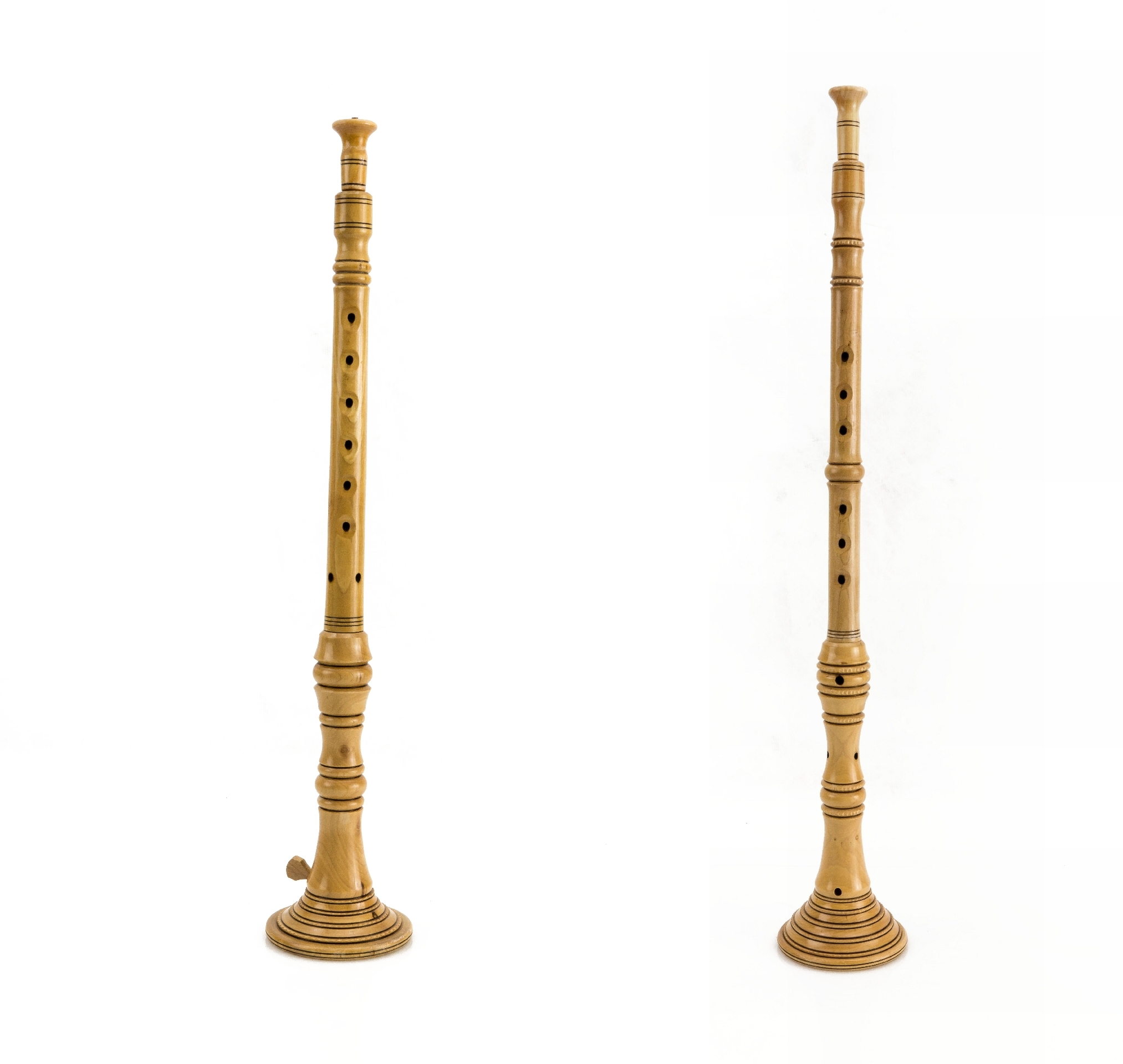Sopile and roženice are typical of Istria, the Croatian Littoral and the Kvarner Islands. They are usually played in pair – like the small and the large sopila and are most often an accompaniment for dance. They are also called roženice - in Barbanština (Barban area), central and southern Istria; supiele – around Žminj; sopele - in Labinština (Labin area), Rudani and some other Istrian villages and sopele or sopile in the Croatian Littoral and the islands (Pernić, 1997: 83). One of the major features of this instrument is its sonority. The sopila consists of four basic parts: an oboe-type reed, stock or špulet (a small cylinder with a jamica or latica – a tiny hole into which the reed is inserted), the chanter and the side (krilo). It is made of various kinds of wood: olive, cherry, walnut and common maple. Sopile can also be made of two types of wood, their chanter is made of olive wood and the špulet of maple wood. Those thick and thin sopilas were made by Radić Ivan “off the top of his head”, born in 1909 in Gostinjac, near Dobrinj (the island of Krk). They were used as accompaniment for dance and were tuned to the so called Istrian scale.
 The great and the little sopila - roženice / Boduleri, Istra / Et 48107; Et 48108, The Collection of Musical Instruments
The great and the little sopila - roženice / Boduleri, Istra / Et 48107; Et 48108, The Collection of Musical Instruments
The sopila players are called sopci. Širola’s texts and research results gathered on the island of Krk in the 1930s clearly illustrate the social context of playing sopile:
“Since dance is an entertainment activity much favoured by the youth throughout the Croatian Littoral and in Bodulija on the island of Krk, the sopila players have a busy schedule every Sunday all summer long because, immediately after the evening service in the church, the youth – boys and girls, gather to dance and as soon as the sopila players begin to play, they pair up and start dancing relentlessly. Dancers can always last longer than sopila players who have to take a break from time to time when they are utterly exhausted. Their throat and mouth become parched due to an extremely demanding technique of playing and incessant blowing into sopile. Therefore, they have to drink frequently…” (Širola, 1932: 30).
The dance would usually take place outdoors; in a square, in front of the church, school or the town hall: “The sopila players sit in a chair each, with some wine close at hand to quench their thirst, as they are about to play or nasapaju as they say in Vrbnik” (ibid.). While playing, the sopila player is thumping his foot against the floor thus making a steady rhythm for himself as well as the dancers. Therefore, sopele (roženice) are used as an accompaniment for dance but even more commonly for the so called matinjade – instrumental preludes to certain festivities.
Ethnologist Tvrtko Zebec, who also carried out ethnomusicological analysis in the course of his field research undertaken on the island of Krk, states that the sopila players enjoy an immense prestige in Krk and by virtue of their playing (sopnja) some sopci, and even their entire families, have been nicknamed accordingly (Zebec, 2005:32). Since the 1980s there has been an interesting blend of a traditional and a more modern musical instrument played at wedding celebrations in Istria – roženice and the accordion.
Items